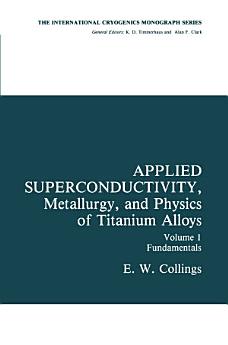Applied Superconductivity, Metallurgy, and Physics of Titanium Alloys: Fundamentals Alloy Superconductors: Their Metallurgical, Physical, and Magnetic-Mixed-State Properties
E.W. Collings
Mar 2013 · Springer Science & Business Media
Ebook
854
Pages
reportRatings and reviews aren’t verified Learn More
About this ebook
Scope and Purpose Although conductors based on the Al5 intermetallic compound Nb Sn 3 possess desirable high-field superconducting properties, manufacturing and handling difficulties, coupled with the tendency of their critical current densities to degrade rapidly under stress, have generally restricted their use to fairly straightforward, usually small-scale solenoidal-magnet applica tions. Likewise the Al5 compound VGa, which has a wider critical strain 3 window than NbSn but a uniformly lower upper critical field, has not 3 entered widespread service. Strain has been found to have no measurable influence on either the critical fields or the critical current densities of compound superconductors with BI and Cl5 crystal structures, but as yet they are still in the research and development stages. On the other hand, conductors using the binary alloy Ti-Nb or multi component alloys based on it, because of their relative ease of manufacture, excellent mechanical properties, and relatively low strain sensitivities, are now being pressed into service in numerous large-scale devices. Such conductors are being wound into magnets for use in energy storage, energy conversion (i. e. , generators and motors), and high-energy particle detectors and beam-handling magnets. of cold-rolled or drawn Ti-Nb-alloy wire for superconducting The use magnet applications was first proposed in 1961. During the ensuing ten years, while progress was being made in the development of Cu-clad filamentary-Ti-Nb-alloy conductors, Ti-Nb and other Ti-base binary transi tion-metal (TM) alloys were being employed as model systems in the fundamental study of type-II superconductivity.
Rate this ebook
Tell us what you think.
Reading information
Smartphones and tablets
Install the Google Play Books app for Android and iPad/iPhone. It syncs automatically with your account and allows you to read online or offline wherever you are.
Laptops and computers
You can listen to audiobooks purchased on Google Play using your computer's web browser.
eReaders and other devices
To read on e-ink devices like Kobo eReaders, you'll need to download a file and transfer it to your device. Follow the detailed Help Center instructions to transfer the files to supported eReaders.





